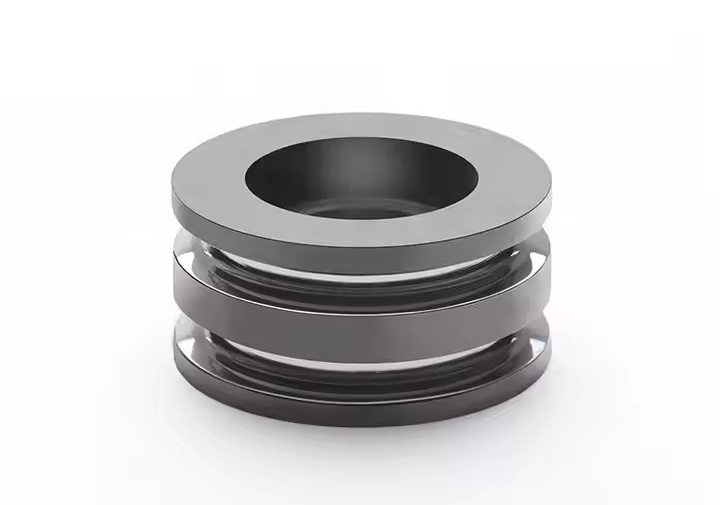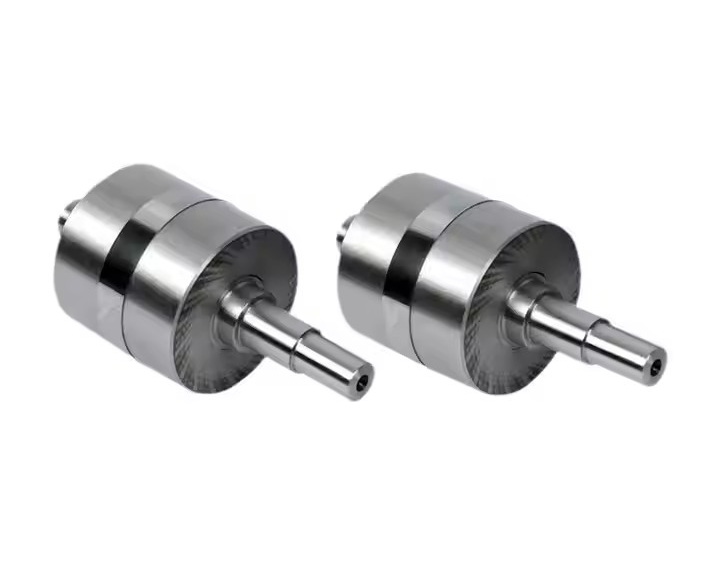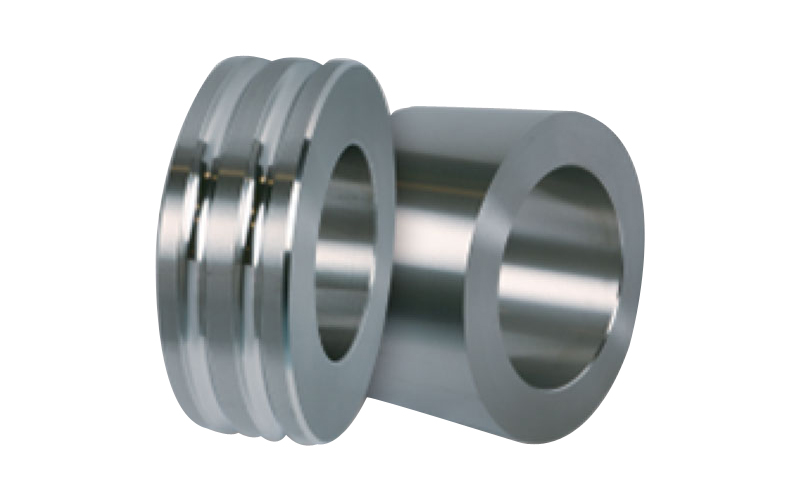Content Menu
● Introduction
● Understanding Carbide Rolls
>> Composition and Properties
● Benefits of Using Tungsten Carbide Rolls
● Key Factors in Choosing Carbide Rolls
>> Material Specifications and Grades
>> Application-Specific Requirements
>> Supplier Reliability and Support
● Innovations in Carbide Roll Technology
>> Advanced Manufacturing Techniques
>> Coating Technologies
>> Smart Technology Integration
>> Customization Options
>> Sustainability Initiatives
● Maintenance Tips for Carbide Rolls
>> Regular Inspections
>> Cleaning Procedures
>> Lubrication
>> Training Operators
● Finding the Right Suppliers
>> Quality Assurance
>> Technical Support
>> Reputation and Experience
>> Customer Reviews
● Conclusion
● Related Questions
>> 1. What are the main advantages of using carbide rolls over traditional rolls?
>> 2. How can I determine the right grade of carbide roll for my application?
>> 3. What maintenance practices can extend the life of carbide rolls?
>> 4. Are there any environmental benefits to using carbide rolls?
>> 5. How do smart technologies improve the performance of carbide rolls?
Introduction
Carbide rolls have become a cornerstone in the manufacturing industry, particularly in metalworking and rolling mills. These rolls, made from tungsten carbide, are renowned for their exceptional durability and performance. As industries evolve, so do the technologies that support them. This article explores the latest innovations in carbide roll technology, highlighting advancements that enhance efficiency, reduce costs, and improve product quality.

Understanding Carbide Rolls
Carbide rolls are cylindrical tools used in various manufacturing processes, primarily in rolling mills. They are made from tungsten carbide, a material known for its hardness and resistance to wear. This makes carbide rolls ideal for high-stress applications where traditional materials would fail. The unique properties of tungsten carbide allow these rolls to withstand extreme conditions, making them a preferred choice in industries such as steel, aluminum, and other metal processing sectors.
Composition and Properties
The composition of carbide rolls typically includes tungsten carbide particles bonded with a metallic binder, often cobalt. This combination results in a material that is not only hard but also tough, allowing it to absorb shocks and resist cracking. The hardness of tungsten carbide is measured on the Mohs scale, where it ranks around 9, just below diamond. This exceptional hardness translates into longer service life and reduced downtime for manufacturing operations.
Benefits of Using Tungsten Carbide Rolls
The adoption of tungsten carbide rolls in manufacturing processes offers numerous benefits:
- Enhanced Durability: Carbide rolls can last significantly longer than traditional steel rolls, reducing the frequency of replacements and maintenance.
- Improved Efficiency: The superior performance of carbide rolls leads to smoother operations, which can enhance the overall efficiency of rolling mills.
- Cost-Effectiveness: Although the initial investment in carbide rolls may be higher, their longevity and reduced maintenance needs often result in lower total costs over time.
Key Factors in Choosing Carbide Rolls
When selecting carbide rolls for specific applications, several factors must be considered:
Material Specifications and Grades
Different grades of tungsten carbide are available, each suited for specific applications. The choice of grade can affect the performance and lifespan of the rolls. For instance, rolls designed for high-speed applications may require a different composition than those used in slower, more controlled processes.
Application-Specific Requirements
Understanding the specific requirements of the application is crucial. Factors such as the type of material being processed, the thickness of the material, and the desired finish all play a role in determining the appropriate carbide roll.
Supplier Reliability and Support
Choosing a reputable supplier is essential for ensuring the quality of carbide rolls. A reliable supplier will provide not only high-quality products but also support in terms of technical advice and after-sales service.
Innovations in Carbide Roll Technology
Recent advancements in carbide roll technology have focused on improving performance, enhancing durability, and reducing costs. Here are some of the most notable innovations:
Advanced Manufacturing Techniques
The manufacturing process for carbide rolls has evolved significantly. Techniques such as powder metallurgy and sintering have been refined to produce rolls with superior properties. These methods allow for better control over the microstructure of the carbide, resulting in improved hardness and toughness.
Coating Technologies
Innovative coating technologies have been developed to enhance the performance of carbide rolls. Coatings such as titanium nitride (TiN) and chromium carbide can be applied to the surface of the rolls to improve wear resistance and reduce friction. These coatings not only extend the life of the rolls but also improve the quality of the finished product by reducing surface defects.
Smart Technology Integration
The integration of smart technology into carbide roll manufacturing is another exciting development. Sensors can be embedded in the rolls to monitor performance in real-time. This data can be used to predict failures, optimize maintenance schedules, and improve overall operational efficiency. By leveraging data analytics, manufacturers can make informed decisions that enhance productivity and reduce costs.
Customization Options
As industries become more specialized, the demand for customized carbide rolls has increased. Manufacturers are now able to produce rolls tailored to specific applications, including unique shapes, sizes, and material compositions. This level of customization ensures that manufacturers can achieve optimal performance for their specific needs.
Sustainability Initiatives
Sustainability is becoming a critical focus in manufacturing. Innovations in carbide roll technology are also addressing environmental concerns. Manufacturers are exploring ways to recycle and reuse carbide materials, reducing waste and minimizing the environmental impact of production processes. Additionally, the durability of carbide rolls contributes to sustainability by reducing the frequency of replacements and the associated resource consumption.

Maintenance Tips for Carbide Rolls
Proper maintenance is essential for maximizing the lifespan and performance of carbide rolls. Here are some best practices:
Regular Inspections
Conducting regular inspections of carbide rolls can help identify wear and damage early. Look for signs of chipping, cracking, or excessive wear, and address these issues promptly to prevent further damage.
Cleaning Procedures
Keeping carbide rolls clean is crucial for maintaining their performance. Debris and contaminants can affect the quality of the finished product and lead to premature wear. Implement a regular cleaning schedule to ensure that rolls are free from buildup.
Lubrication
Using the appropriate lubrication can significantly enhance the performance of carbide rolls. Ensure that the lubrication used is compatible with the materials being processed and the operating conditions of the rolls.
Training Operators
Training operators on the proper handling and maintenance of carbide rolls can prevent damage and extend their lifespan. Operators should be aware of the specific requirements for the rolls they are using and how to maintain them effectively.
Finding the Right Suppliers
Selecting the right supplier for carbide rolls is crucial for ensuring quality and reliability. Here are some criteria to consider:
Quality Assurance
Look for suppliers that adhere to strict quality assurance standards. Certifications such as ISO 9001 can indicate a commitment to quality and consistency in manufacturing processes.
Technical Support
A good supplier should offer technical support and advice on the selection and maintenance of carbide rolls. This support can be invaluable in optimizing performance and addressing any issues that arise.
Reputation and Experience
Consider the supplier's reputation in the industry. Suppliers with a long history of providing high-quality products and services are often more reliable.
Customer Reviews
Reading customer reviews and testimonials can provide insights into the experiences of other manufacturers with a particular supplier. Look for feedback on product quality, customer service, and overall satisfaction.
Conclusion
The innovations in carbide roll technology are transforming the manufacturing landscape. From advanced manufacturing techniques to smart technology integration, these developments are enhancing the performance and durability of carbide rolls. As industries continue to evolve, the importance of high-quality, reliable carbide rolls will only grow. By understanding the latest advancements and choosing the right products and suppliers, manufacturers can optimize their operations and achieve greater efficiency.

Related Questions
1. What are the main advantages of using carbide rolls over traditional rolls?
Carbide rolls offer enhanced durability, improved efficiency, and cost-effectiveness due to their longer lifespan and reduced maintenance needs.
2. How can I determine the right grade of carbide roll for my application?
The right grade depends on factors such as the type of material being processed, the thickness of the material, and the specific requirements of the application.
3. What maintenance practices can extend the life of carbide rolls?
Regular inspections, cleaning, proper lubrication, and training operators on handling can significantly extend the life of carbide rolls.
4. Are there any environmental benefits to using carbide rolls?
Yes, carbide rolls are more durable, which reduces the frequency of replacements and associated resource consumption, contributing to sustainability efforts.
5. How do smart technologies improve the performance of carbide rolls?
Smart technologies allow for real-time monitoring of roll performance, enabling predictive maintenance and optimization of operational efficiency.
















